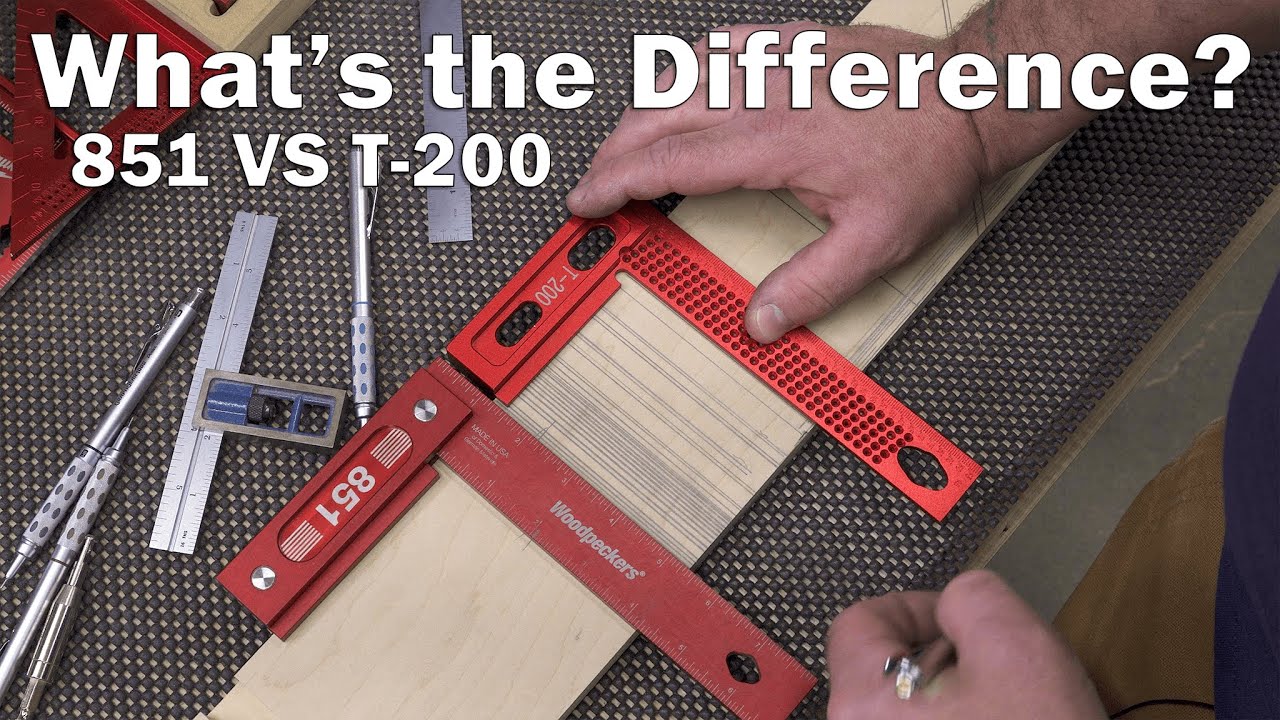This review and comparison were created by Jodee from Inspire Woodcraft. He takes a deep look at two woodworking squares that vary widely in price and reputation: the Woodpeckers 851 and the T-200 from Drillpro.
Try squares are simple but essential tools for accuracy in layout and joinery. In this side-by-side comparison, Jodee breaks down the build quality, usability, and practical differences to help woodworkers decide which tool makes the most sense for their needs.
Watch the full video and subscribe to Jodee’s channel:
What Is a Try Square?
Try squares are used to check for 90-degree angles and mark straight, square lines on wood. They’re one of the most used tools in any shop, especially when accuracy matters.
But not all squares are created equal. This comparison focuses on two models at very different price points—the premium Woodpeckers 851 and the much cheaper T-200 from Banggood. Jodee also briefly references a well-known Empire square for added context.
First Impressions: Packaging and Presentation
Right out of the gate, the difference in packaging reflects the difference in price. The Woodpeckers 851 arrives in a rigid, professional-grade case that protects the tool in transit and makes long-term storage easier.
In contrast, the T-200 comes in a bubble mailer with no case or reinforcement. While presentation doesn’t affect function, it may suggest differences in how the tools are built and supported over time.
Build Quality and Materials
The Woodpeckers 851 is made from anodized aluminum and feels solid in the hand. It has laser-engraved markings that are crisp and easy to read under any lighting condition, making it a pleasure to use.
The T-200 has a noticeably thinner blade and a lower-grade finish. It’s lightweight and functional, but the lack of backfill in the engraved measurements can make them difficult to read. The holes in the blade are designed to assist with marking, but may take some getting used to.
Practical Precision
In real use, the Woodpeckers 851 sits flat on surfaces and holds its position well when marking or measuring. The lip along the base offers a natural grip and helps keep the tool in place.
The T-200, while serviceable, can introduce minor parallax error because of its thinner blade. Its measurements begin at different points depending on which side is used, which could confuse users during layout work.
Graduation Markings and Usability
The Woodpeckers model features consistently spaced, clearly labeled graduations. Whether you’re marking inside or outside edges, the tool delivers consistent performance and intuitive handling.
The T-200’s markings are not always intuitive, and flipping the tool over can lead to alignment issues. Jodee notes that while the square works for basic use, it requires more caution and experience to avoid mistakes.
Strengths and Weaknesses Side by Side
The Woodpeckers 851 shines in nearly every category—design, readability, durability, and usability. It’s clearly built for professionals or serious hobbyists who value precise results and long-lasting tools.
The T-200’s biggest strength is its price. For those just getting started or needing a backup tool, it offers a basic level of functionality. That said, its quirks in marking systems and feel may be a dealbreaker for more experienced users.
Workshop Use and Reliability
Jodee tests both tools in layout situations, checking how flat they sit, how they feel during marking, and how easily errors could occur. The Woodpeckers square maintains its position and performs without surprises.
The T-200 holds its own in less critical applications but shows its limitations during more exacting tasks. It’s best suited for rough layout work or as a low-cost learning tool for new woodworkers.
Feedback from the Woodworking Community
Jodee also discusses feedback from his audience. The Woodpeckers 851 is widely praised for its quality and consistency, with many users calling it a must-have in their shop.
The T-200 has more mixed reviews. Some appreciate its affordability, while others find it frustrating for daily use due to inconsistent markings and blade thickness. For those expecting premium performance, it falls short—but for light-duty use, it can still be valuable.
Making the Right Choice
Choosing between these two tools really depends on your goals. If precision and long-term durability are important, the Woodpeckers 851 is worth the higher price. It’s a well-made tool that will likely last for years of reliable use.
On the other hand, the T-200 may be a reasonable choice for someone just starting out, or for someone looking for a backup square on a tight budget. It’s not without its issues, but it’s usable if you stay aware of its limitations.
Support Jodee by visiting his online store here: https://inspirewoodcraft.com/collections/all.
